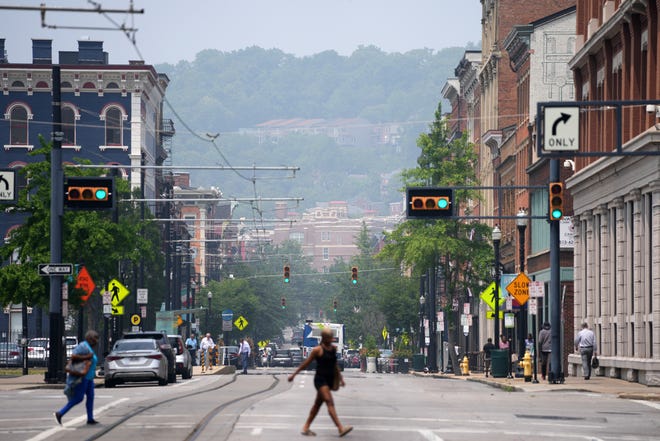Ohio
Poor air quality a public health threat in Cincinnati | Opinion


Driving south across the Brent Spence Bridge on June 28, I could barely see the hills of Northern Kentucky, obscured by a white haze. Later that evening, I developed a headache, as smoke from Canadian wildfires covered the Midwest.
Cincinnati, ranked as the 18th in the nation for worst year-round air pollution by the American Lung Association, is no stranger to poor air quality, but this summer has been record-breaking.
The air quality index (AQI) reached close to 200 in June, according to the Southwest Ohio Air Quality Agency, the highest value seen in the area since recording began in 2000. An AQI of over 100 is considered unhealthy for sensitive groups, including people who are pregnant, children, the elderly and people with chronic illnesses. An AQI over 150 is unhealthy for everyone; 24 hours of exposure is equivalent to smoking three cigarettes. This June highlights air pollution as a public health threat in Cincinnati.
Air pollution has been linked to a number of negative health outcomes. While short-term effects such as headaches, itchy eyes and coughing may seem minor, air pollution can also increase your risk of cancer, cardiovascular disease and respiratory disease. People with pre-existing conditions experience a higher rate of hospitalizations and death during periods of poor air quality.

There are also mental health effects of air pollution. Breathing poorer air is associated with greater risk of psychiatric disorders such as depression and exacerbations of existing mental illnesses. For example, a study in Cincinnati found that increased fine particulate matter air pollution was associated with higher usage of psychiatric emergency departments for children.
People of color are disproportionately exposed to and impacted by poor air quality in the United States. Historic redlining and structural racism has placed Black communities closer to sources of air pollution such as major highways, train yards and industrial areas, and Cincinnati is no exception. This leads to increased health care costs, lost productivity and decreased quality of life for people in these communities, worsening pre-existing racial inequities in our city. While this is a complex issue, policy solutions should include the voices of people of color and invest additional resources in these communities.
Periods of poor air quality will only continue to increase in frequency and severity due to climate change. As the planet warms, we can expect to see more extreme weather events, such as heat waves and wildfires, which can lead to spikes in air pollution. While many “What to Do During an Air Quality Alert” tips include individual-level actions such as driving your car less and conserving electricity, higher-level solutions are urgently needed. Procter & Gamble’s commitment to achieving net zero greenhouse gas emissions by 2040 and the Biden-Harris administration’s proposal to tighten federal vehicle emission standards are just a start.

At a local level, the city of Cincinnati and Hamilton County can invest in public transportation, clean energy and public health infrastructure, increase greenspaces and build affordable housing and schools further from pollution sources. Governments can help fund air filtration systems for businesses, schools and homes. Mayor Aftab Pureval has voiced a commitment to environmental action, public safety and racial equity in Cincinnati, inspiring hope for Cincinnatians that these issues will be addressed, but more needs to be done.
Individuals, communities and governments need to be aware of air quality issues and take steps to mitigate them. We need systemic change now to address climate change. By working together and demanding change from our leaders, we can help ensure that everyone breathing the air in Cincinnati stays safe and healthy.
Carson Hartlage is a Clifton resident and a medical student at the University of Cincinnati College of Medicine.













You must be logged in to post a comment Login